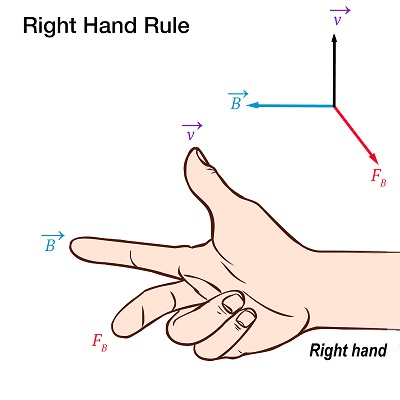Exploring Magnetic Forces: Properties, Applications, and Phenomena
Introduction
Magnetic forces are one of the fundamental interactions that shape our physical world, playing a critical role in various natural and technological phenomena. From the mechanics of electric motors to the principles behind magnetic levitation trains, understanding magnetic forces provides deep insights into how charged particles interact and how these interactions drive innovation. This guide explores the origins, properties, and applications of magnetic forces in detail, providing an SEO-optimized resource for enthusiasts and learners.
What Are Magnetic Forces?
At the macroscopic level, forces can be broadly classified into long-range forces and contact forces. Magnetic forces belong to the category of long-range forces, meaning they act over a distance without requiring physical contact between the objects involved.

How Magnetic Forces Arise
Magnetic forces result from the interaction of charged particles or magnets. When a charged object or magnet moves near another charged object or magnet, a magnetic force is generated. This force causes the objects to attract or repel one another, depending on the alignment of their poles or the direction of the moving charges.
Everyday Applications of Magnetic Forces
Motors and Generators: Magnetic forces drive the conversion of electrical energy into mechanical energy and vice versa.
MRI Machines: Magnetic fields produce detailed images of internal structures in the human body.
Magnetic Levitation Trains: These trains hover above their tracks due to magnetic forces, enabling frictionless and high-speed transportation.

Properties of Magnetic Forces
1. North-South Dipole Polarity
Magnetic forces are inherently tied to the concept of magnetic dipoles, characterized by north and south poles. These poles exhibit the following behaviors:
Field Lines: Magnetic field lines emerge from the north pole and converge at the south pole, forming closed loops.
Strength Distribution: The magnetic field is strongest near the poles and weaker in the regions between them.
Pole Interactions: Like poles repel, while opposite poles attract.
This dipole nature is also observable in the Earth’s magnetic field, where the geographic north and south poles correspond to the magnetic poles, guiding compasses and protecting the planet from solar radiation.

2. Magnetic Dipole Moments
The magnetic dipole moment (denoted by ) describes the strength and orientation of a magnetic field produced by a dipole. It is a vector quantity with the following characteristics:
Direction: Points from the south pole to the north pole.
Magnitude: Proportional to the strength of the magnetic field produced.
Formula:
Where is the current and is the area of the current loop.
Magnetic Alignment
In the presence of an external magnetic field, a dipole aligns itself with the field due to a torque. This alignment depends on:
The strength of the external field.
The magnetic properties of the dipole’s material.
The temperature of the system.
Calculating Magnetic Forces
Magnetic forces act on moving charged particles and current-carrying wires. These forces are always perpendicular to both the magnetic field and the direction of motion.
1. Force on a Charged Particle
The force on a charged particle moving through a magnetic field is given by:
Where:
: Charge of the particle
: Velocity vector of the particle
: Magnetic field vector
2. Right-Hand Rule (RHR)
The Right-Hand Rule helps determine the direction of the magnetic force:
Point your thumb in the direction of the particle’s velocity.
Point your fingers in the direction of the magnetic field.
Your palm faces the direction of the force (for positive charges). For negative charges, the force is in the opposite direction.

3. Force on a Current-Carrying Wire
A current-carrying wire placed in a magnetic field experiences a force due to the moving charges within the wire. This force is calculated as:
Where:
: Current in the wire
: Length vector of the wire
: Magnetic field vector
Using the Right-Hand Curl Rule:
Point your thumb in the direction of the current.
Curl your fingers around the wire to determine the field direction.
Visualizing Magnetic Fields
Field Lines and Patterns
Around Magnets:
Field lines form closed loops, emerging from the north pole and converging at the south pole.
The density of the lines indicates field strength.
Around Current-Carrying Wires:
Circular field lines radiate outward, with direction determined by the Right-Hand Curl Rule.
Field Strength and Visualization
Magnetic Field Strength: Measured in Tesla (T), where:
Tools like iron filings or magnetic field viewers help visualize magnetic field shapes and strengths.
Practical Implications of Magnetic Forces
Everyday Technology
Electric Motors: Convert electrical energy into mechanical motion using magnetic forces.
Generators: Use magnetic forces to convert mechanical energy into electricity.
Magnetic Storage Devices: Data is stored using magnetized regions on hard drives and tapes.
Environmental Impact
Earth’s Magnetic Shield: Protects life by deflecting harmful solar winds.
Auroras: Beautiful displays caused by charged particles spiraling along Earth’s magnetic field lines.
Practice Questions
Scenario 1: Charged Particle in a Magnetic Field
A proton moves through a uniform magnetic field directed into the page. Using the RHR:
The force direction is upward for a positive charge like the proton.
If the charge were negative, the force would point downward.
Scenario 2: Current-Carrying Wire in a Magnetic Field
A horizontal wire carries current to the right while placed in a magnetic field pointing upward. Using the RHR:
The force on the wire is directed out of the page.
Conclusion
Magnetic forces are a cornerstone of modern physics and technology. From the intricate behavior of magnetic dipoles to the practical applications in transportation and medical imaging, these forces influence our lives in countless ways. By mastering the principles and properties of magnetic forces, we can better understand the world and harness their potential for innovation. For more educational resources, visit slyacademy.com.







